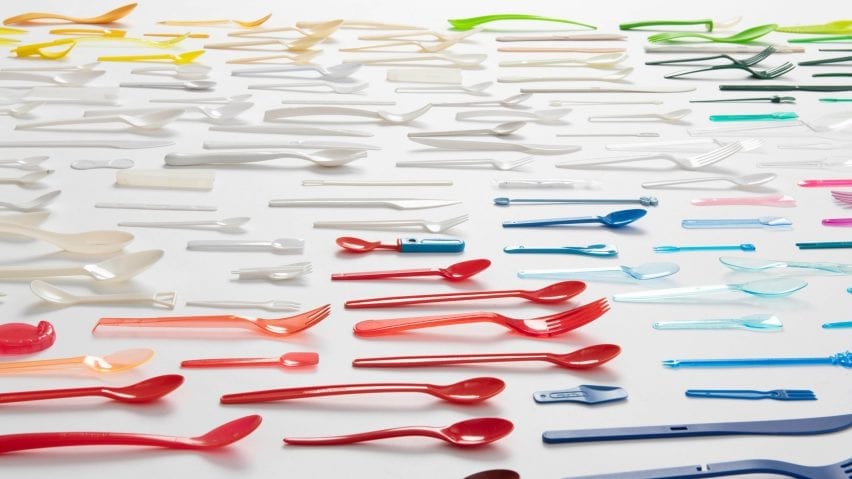
Spoon Archaeology at London Design Biennale shows single-use cutlery as archaeological remnants
German designers Kai Linke and Peter Eckart have created an exhibition for the London Design Biennale in which disposable plastic cutlery is displayed as archaeological artefacts.
Informed by the European Union's ban on single-use plastic cutlery, Spoon Archaeology aims to respond to the biennale's theme, Can we design a better world?
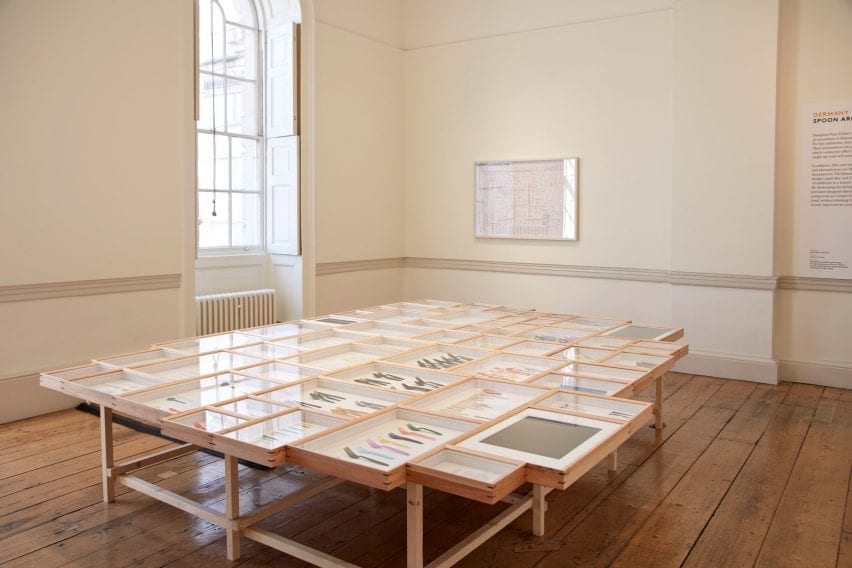
The German installation is one of 29 exhibitions by different countries and regions at the London Design Biennale. It was curated by the Staatliche Kunstsammlungen Dresden director Thomas A Geisler and is a collection of utensils that the designers collected over a time period of 20 years.
Spoon Archaeology was organised and designed as a study that presents single-use plastic as if displayed in "a natural history museum," where the items have become artefacts.
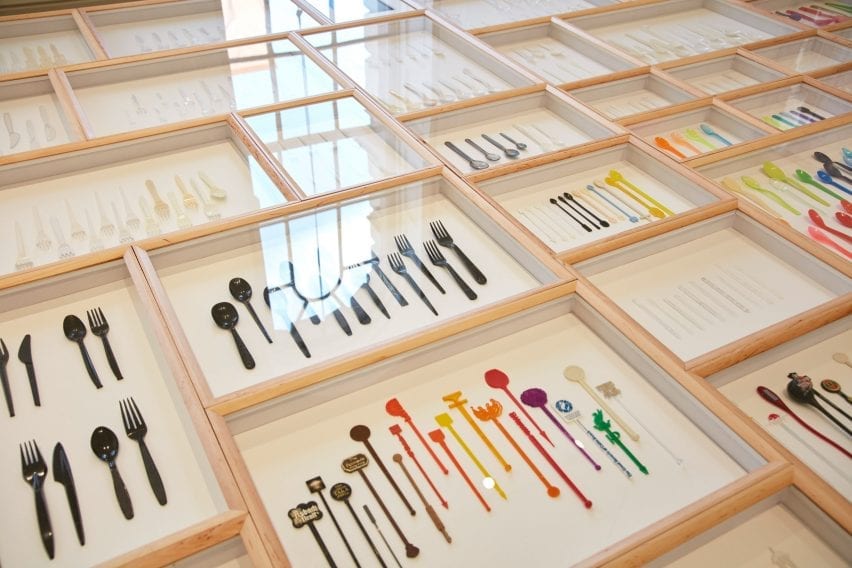
"Presented in frames, where normally dead insects are presented in natural history exhibition, the cutlery becomes artefacts of a culture, which has to change in a basic way – not only by changing plastic materials to so-called 'eco-friendly' materials," Kai Linke and Peter Eckart told Dezeen.
"The collection started by chance and separately between Kai and Peter. It grew over nearly 20 years. First as curiosity, later as representative for design and design process."
The Spoon Archaeology cutlery is displayed in light wood cases placed in the centre of the room. Within the cases, the objects are organised and grouped by colour shade and by function.
"The cutlery is a complete expression, a representation of our economical driven culture, which probably comes to an end regarding the prohibition of take-away products like cutlery, plates, cups and so on – but also in regard of changing awareness," said the designers.
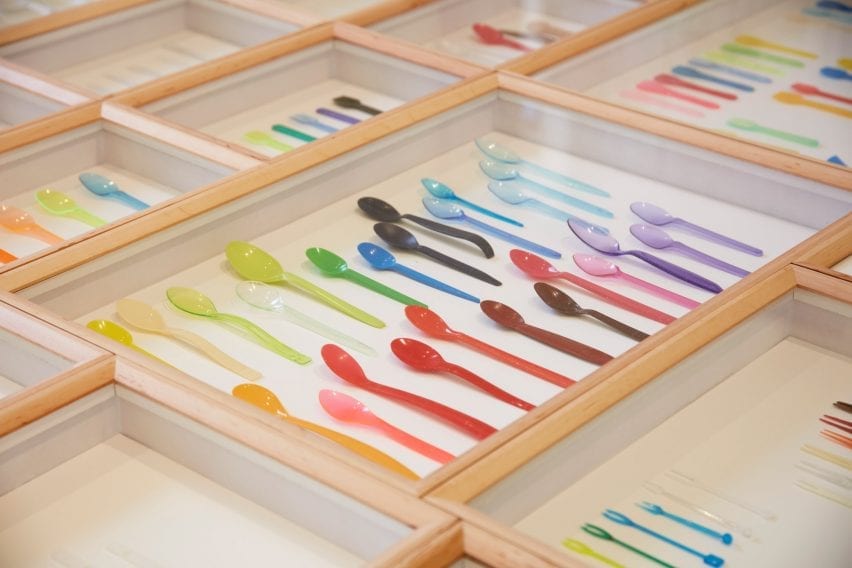
Exhibited alongside the display cases with the plastic cutlery are three films. One, Fingers and Food, demonstrates people using their hands to eat and suggests how cultures could adopt alternatives to cutlery.
Another, Beyond Spoon, shows a hyper-spoon generated through AI. The last film, Banana Leaf, was made by designers Charles and Ray Eames and shows people of different social groups, from peasants to priests, eating their meals off banana leaves.
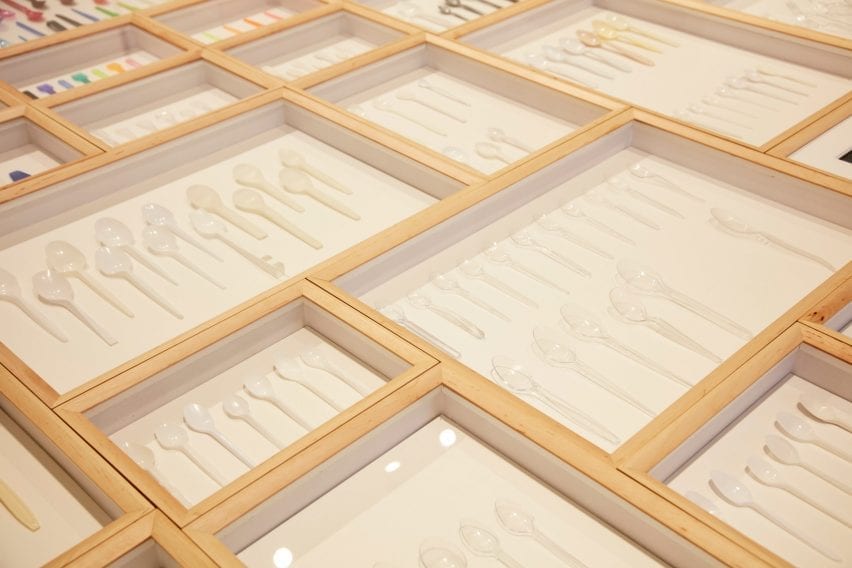
The installation hopes to address issues of sustainability and the implications of throwaway and single-use products.
Elsewhere at the Biennale, Es Devlin filled Somerset House's courtyard with 400 trees, while Ini Archibong spoke to Dezeen about his The Pavilion of the African Diaspora.
Photography is by Heiko Prigge.
Spoon Archaeology will be on display at Somerset House as part of the London Design Biennale, which takes place from 1 to 27 June 2021. See Dezeen Events Guide for all the latest information you need to know to attend the event, as well as a list of other architecture and design events taking place around the world.